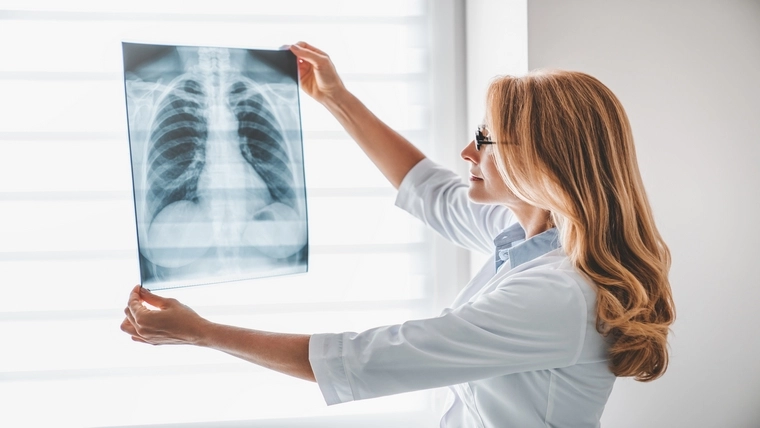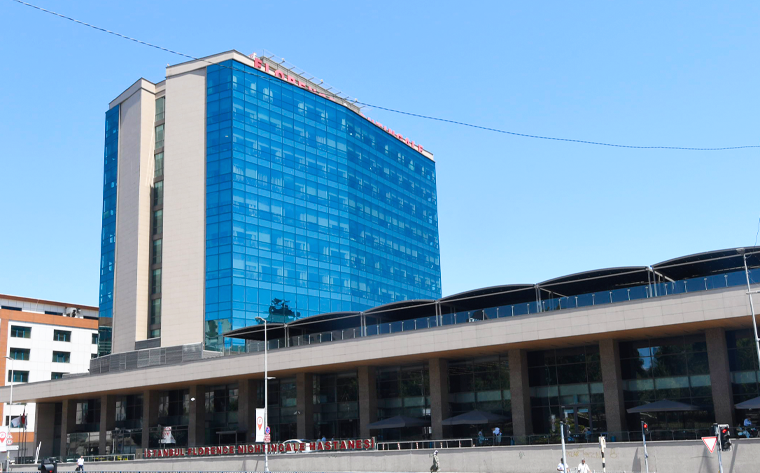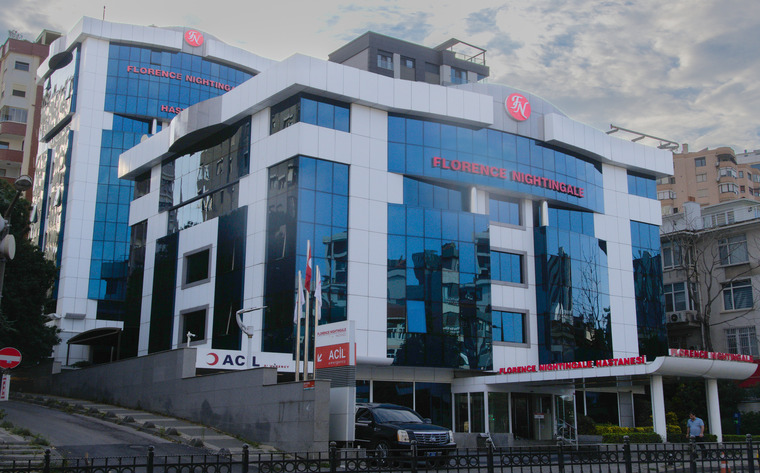
What is Thoracic Surgery?
Thoracic surgery is a branch of medicine that deals with the surgery of diseases of organs and tissues other than the heart and great vessels located within the rib cage. It deals with the surgical treatment of diseases that occur in structures such as the lungs and ribs and chest wall located around the lungs, as well as the pleura, esophagus, mediastinum and diaphragm. Approximately 80% of the surgeries performed by thoracic surgeons are cancer types. Lung cancer, esophageal cancer, tumors located in the chest wall, thymoma mediastinum masses are among the cancer types that thoracic surgeons perform surgeries on. Surgical procedures applied to treat various diseases other than cancers are also performed by thoracic surgeons. Thymus gland removal surgery (thymectomy) in Myasthenia Gravis, ETS ( Endoscopic Thoracic Sympathectomy) surgery in cases of excessive sweating of the palms (hyperhidrosis), removal of the first rib in thoracic outlet syndrome and myotomy in achalasia are surgeries performed by thoracic surgeons. Today, thoracic surgery uses a thin camera and high-resolution screens, and surgeries are performed by making small incisions in the body.
Diagnostic methods in thoracic surgery and Florence's approach
Many diagnostic methods are used to diagnose diseases in the thoracic surgery department. The Florence Nightingale Hospitals Group, which has achieved significant success since 2010, has advanced and highly equipped diagnostic devices in its thoracic surgery center. The diagnostic methods used in the thoracic surgery department, which works in coordination with other branches such as thoracic diseases, radiology and nuclear medicine, are as follows:
- Lung Film: This radiological examination uses X-rays to visualize the lung structure. As a result of this examination, which includes low doses of radiation, the lungs and surrounding tissues are examined. Masses and lung diseases in this area can be detected.
- Computerized Tomography (CT): It is one of the diagnostic methods used in imaging lung tissue. Since it takes a large number of images, the organs and tissues in the chest can be examined in detail.
- Magnetic Resonance Imaging (MRI): It is a diagnostic tool that does not contain radiation and is used to image internal body organs with magnetic resonance waves.
- Positron Emission Tomography (PET-CT): It is an imaging method applied by the nuclear medicine branch used in cancer diagnosis and staging.
- Respiratory Function Tests: It is a non-invasive diagnostic method used to show the working capacity of the lungs. With this test, the amount of air inhaled and exhaled is measured and lung capacity is calculated.
- Cardiopulmonary Exercise Test: An advanced examination procedure for patients with limited respiratory function that determines the amount of oxygen the body consumes per minute.
- Ventilation Perfusion Scintigraphy: Used to determine pulmonary vascular occlusion or remaining lung capacity after surgery.
Diseases treated in Thoracic Surgery
Diseases, cancers or disorders that occur in tissues and organs other than the heart and great vessels in the area between the diaphragm and chest wall in the body are treated in the thoracic surgery department. These diseases are classified according to the regions where they occur:
- Lung: Lung cancer, pulmonary nodules, aspergilloma, pleural effusion (accumulation of fluid between the lung membranes), empyema (accumulation of inflammatory fluid between the lung membranes), pneumothorax (accumulation of air between the lung and the chest wall), metastases from other organs to the lung, hemothorax (accumulation of blood between the lung and the chest wall), pericardial tamponade (accumulation of fluid between the pericardial layers), diaphragmatic paralysis (failure of the diaphragm, the most important muscle of breathing), bullous lung disease, chest wall tumor, bronchopleural fistula (abnormal connection between the airways and the membrane surrounding the lungs), and mesothelioma (tumor in the membrane surrounding the lung).
- Mediastinum: Mediastinum mass and lymphatic diseases, thymoma (thymus gland cancer), thymic cysts, etc.
- Esophagus: Esophageal cancer, esophageal stricture or perforation, achalasia.
- Trachea: Tracheal masses and stenoses.
- Chest wall: It is the treatment of depressions or deformities in the chest wall.
What are the procedures and examinations performed in Thoracic Surgery?
Many special procedures and examinations can be performed in the thoracic surgery center within Florence Nightingale Hospitals. While performing these procedures and examinations, work is carried out in coordination with other relevant branches. Some of these procedures and examinations are as follows:
- Bronchoscopy: This is an examination in which the lungs and respiratory tracts are evaluated with a camera. A thin tube with a camera on its end is advanced through the nose or mouth to the respiratory tract and the lung structures are examined from the inside. If deemed necessary, mucus or tissue samples can also be taken through bronchoscopy.
- EBUS (Endobronchial Ultrasonography): This diagnostic method, which consists of a tube with a camera system similar to bronchoscopy, also includes an ultrasound probe along with the camera. In this way, the lungs and surrounding lymph nodes can be evaluated closely. For the procedure, the tube is advanced through the mouth or nose into the respiratory tract.
- Pleural biopsy: The pleura is a double-layered membrane that surrounds the lungs. It is examined by taking a sample of pleural tissue with a needle or during surgery. With this procedure, the tissue sample is examined for problems such as cancer and infection.
- Videothoracoscopic surgery: With this procedure, which has been performed in our thoracic surgery center since 2010, it is possible to perform surgery without the need for open surgery and large incisions in the body. In videothoracoscopic surgery, small incisions are made and the structures inside the body are viewed with the help of a camera and the surgery is performed in this way.
-
- Robotic surgery: Robotic devices are used to eliminate risk factors such as hand tremors in robotic surgery where a camera system is used. This method, which has much higher mobility compared to the human hand, is applied in our advanced technology robotic surgery center.
- Diaphragmatic hernia: Congenital or acquired defects in the diaphragm.
What are the treatment methods and Florence's approach in Thoracic Surgery?
In the thoracic surgery department, diseases that concern organs and tissues other than the heart and great vessels in the thoracic cavity are treated. Florence Nightingale Hospitals Group approaches these diseases from a multidisciplinary perspective. In the thoracic surgery department, which works in coordination with other relevant branches, advanced technology and equipment are used in the diagnosis phase as well as in the treatment phase. In the treatment of diseases, work is done in coordination with the anesthesia department and surgical operations are performed by anesthetizing the patients. Surgeries performed in our department can be performed with open surgery or minimally invasive methods. Robotic surgery procedure, which is one of the minimally invasive methods, has been increasingly used in the Florence Nightingale Hospital thoracic surgery clinic since 2011.
- Open surgery: Open surgery is used for operations that are too large to be performed with closed methods. In this method, incisions are made in the skin and subcutaneous tissues and the relevant organs are operated on.
- Thoracoscopic surgery: In this method, which uses up-to-date technology, closed surgery is performed. In this minimally invasive surgery method, which is performed by imaging the tissues inside the body with a camera system, the surgical scar is smaller than open surgery and the complication rate is lower. Post-operative pain is also less and the hospital stay is shorter.
- Robotic surgery: In robotic surgery, where a camera system is used, robotic devices are used to eliminate risk factors such as hand tremors. This method, which has a much higher mobility compared to the human hand, is applied in our advanced technology robotic surgery center.
What are the health technologies (devices) used in Thoracic Surgery?
Equipped with up-to-date technological devices, Florence Nightingale Hospitals' thoracic surgery department provides doctors with many devices used in the diagnosis and treatment of diseases. Some of the devices used by the thoracic surgery department in our advancedly equipped hospital are as follows:
- Lung X-ray, computed tomography and magnetic resonance imaging: Each of these devices used in the diagnosis of diseases has advantages over the other. After the examination in our hospital, the most appropriate diagnostic method is selected and used for the diagnosis of diseases.
- Bronchoscopy and EBUS (endobronchial ultrasonography): Devices that examine the respiratory tract and lungs by entering a tube with a camera at the end through the nose or mouth are very important in diagnosis. The ultrasound probe, which is additionally found in the EBUS device, also allows lesions that cannot be seen with the camera to be viewed ultrasonographically.
- Robotic surgery and videothoracoscopic surgery: Videothoracoscopy, which uses cameras and high-resolution monitors, allows minimally invasive procedures to be performed in thoracic surgery. In robotic surgery, robot arms, which have much higher maneuverability than thoracoscopy, allow the surgeon to transfer their skills to the patient more successfully thanks to the image quality and robot protection with 16-fold magnification features.
Why should I choose Florence for Breast Surgery?
Florence Nightingale Hospitals are fully-fledged healthcare institutions with high-end equipment and specialist doctors in various branches. In the field of thoracic surgery, an individual-focused diagnosis and treatment approach is offered and work is carried out in coordination with other branches. In order to make the right diagnosis, our experienced team is assisted by the technical devices in our hospitals. Group Florence Hospitals offer healthcare services at international standards. In addition, operating rooms with technological devices allow surgical operations to be performed safely.
What are the Florence Thoracic Surgery team, their specialties and areas of interest?
The Florence thoracic surgery center, which has a smiling and experienced team, diagnoses and monitors many diseases. In addition, thanks to the well-equipped operating rooms, surgeries are performed on organs and tissues other than the heart and great vessels in the chest cavity. Our team, which specializes in robotic surgery, has been performing lung cancer surgeries with robots since 2011. This department, which is one of the five leading robotic surgery centers in Europe, has a large number of patient experiences. In addition to lung cancers, esophageal surgeries, pleural membrane surgeries and removal of mediastinal masses (such as thymoma) or cysts can also be performed with robotic surgery. In addition to robotic surgery, our thoracic surgery team, which is also an expert in thoracoscopic surgical interventions, performs various surgeries with videothoracoscopic surgery:
- Thymus gland surgery (thymectomy)
- Removal of mediastinal masses or cysts (such as thymoma)
- Surgical treatment of benign lung diseases (congenital diseases, cystic diseases, bronchiectasis)
- Lung nodule removal
- Surgical treatment and removal of lymph nodes in lung cancer
- Surgical treatment of lung membrane diseases (pleural effusion, empyema, mesothelioma)
- Hand sweating (hyperhidrosis) surgery
What is its relationship with other units from a multidisciplinary perspective?
The thoracic surgery department cooperates with many units in both diagnosis and surgical treatment processes. This multidisciplinary approach ensures safer, more accurate, faster and more effective results in the diagnosis and treatment of diseases. Other units that the thoracic surgery department cooperates with and communicates with are as follows:
- Radiology: The radiology department, which plays a very important role in the diagnosis of diseases in the lungs and other tissues with imaging techniques, uses imaging methods such as chest X-ray, CT and MRI.
- Nuclear medicine: Lung scintigraphy, PET-CT and PET-MR methods are used in the diagnosis of many diseases that thoracic surgery deals with.
- Chest diseases: It is one of the departments with the closest relations with thoracic surgery, with its experience in bronchoscopy and EBUS, treatment practices that enable patients with limited respiratory functions to return to normal life more quickly after surgery, and its knowledge and experience in non-surgical lung diseases.
- Anesthesia: This is the department where patients scheduled for surgery are evaluated to determine whether they are suitable for anesthesia. In addition, anesthesiologists ensure that patients receive anesthetic medication before surgery so that they do not feel pain during surgical procedures.




